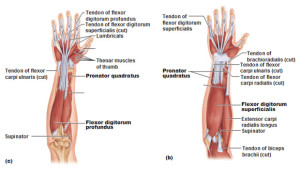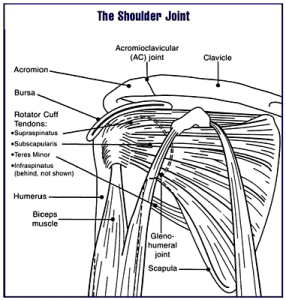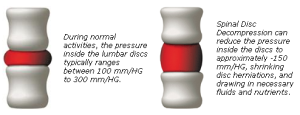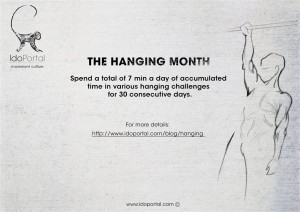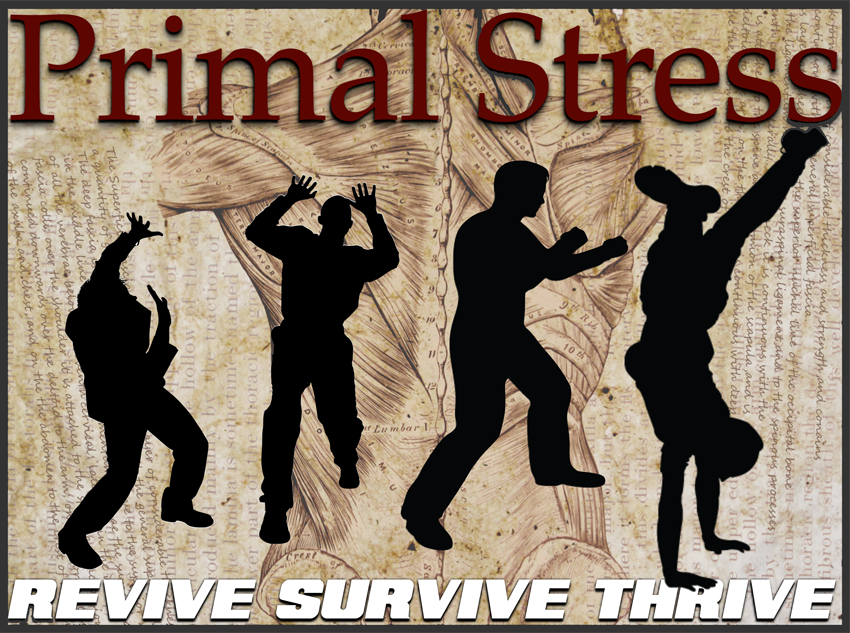Earlier this year we wrote an article about the 30/30 Squat Challenge by Ido Portal. The premise for that article was to get people to improve their posture and mobility through body weight deep squatting. The article looked at the challenge set by Ido Portal, who is a world renowned movement guru, which introduced participants to progressively working their way up to sitting in a deep squat position for a cumulative period of 30 minutes each day for a period of 30 days in a row and then to continue on in maintaining that hip, posture and mobility health after the challenge goals have been met.
In that article we highlighted the fact that over time many people within our society have begun to develop poor posture and this has led to a dramatic restriction in their ability to move the way in which the human body was designed and should be able to. Subsequently, we have seen many people suffering crippling and debilitating health due to extremely poor posture and the ailments that come from that. Ultimately, this can be blamed on many different things but that of which is not least is modern technology.
The lack of general human movement that many people forego in this day and age is concerning. All day sitting hunched over at a computer desk to then drive home and lounge around on the couch watching television means that not only are many people missing out on well needed exercise but even more critically they are missing out on keeping the body mobile and agile especially in comparison to our ancestors and even the early caveman.
It is no secret that in modern times the human body has changed but what we want to try and do is recreate some of that intended movement and strength that our body was initially created for in order to better our overall health and wellbeing.
Primal Stress Program
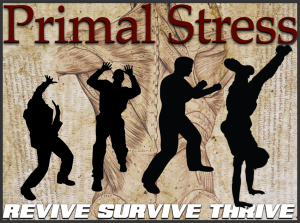
What we want to do in this article is to provide for a continuation on from the “30/30 Deep Squat Challenge” and introduce people to the “30 Day Bar Hanging Challenge” which will provide for a complete strategy in improving your overall mobility, strength and posture.
Whilst the 30/30 Day Squat Challenge by Ido Portal focused on the hips and back, in this new challenge also put together by movement guru Ido Portal we focus on straight arm strength and shoulder health. This is done through a number of bar hanging exercises which we will discuss in further detail shortly.
Bar hanging exercises just like when we were kids playing in the playground swinging on the monkey bars. We didn’t seem to have a worry in the world when we were young children however the reality is that for many people today they actually struggle to fully extend their arms above the head which is a clear indicator of poor shoulder health and mobility.
Throughout this article we encourage you to understand the importance of straight arm strength and shoulder health and put in place a practical strategy to gradually work your way up to participating in and then completing the “30 Day Bar Hanging Challenge by Ido Portal”.
Once you are in a position where you have completed the challenge then we would be very keen to hear from you about the benefits that you have derived from your successful completion of the challenge.
The Benefits of Hanging Exercises
It is not only your shoulders that will benefit from hanging exercises but a whole range muscles, joints and ligaments will benefit from you being able to complete the 30 Day Bar Hanging Challenge.
Hanging exercises involve what is called straight arm strength and this type of body weight strength can significantly improve your grip strength, your wrist flexors, your forearm strength and of course your shoulder strength.
The wonderful thing about hanging exercises is that if you are a novice and do not have much straight arm strength then you can start off with relatively easy hanging exercises and as you become stronger and progressively work your way up to more advanced hanging exercises which are certainly not for the faint hearted.
The specific benefits you will get from incorporating Bar Hanging Exercises into your training routine will include:
- Grip and Forearm Strength
By building greater strength in your hand and wrist flexors & extensors or otherwise referred to as grip and forearm strength then you are concentrating on your bodies core strength even though most people do not often think of forearm strength as core strength.
Your grip and forearm strength is such an integral part of your core strength yet it is so often overlooked by people intent on focussing on the major muscle groups. If you think about it, when you are engaging in most free weight lifting or body weight activity it is often the grip strength that will begin to fail first (especially if you have weak grip strength).
Grip and forearm strength is part of the bodies core foundation and the link between strength and mobility in the upper and lower body. Matt Shifferle at ShapeFit gives some really insightful thoughts and reasons on why a Crushing Grip Strength and Python Forearms are so important.
- Scapular Stabilization & Stronger Shoulder Muscles
Bar hanging exercises to build stronger shoulders is not about building really big deltoid muscles to impress yourself in the mirror. Instead what we are interested in doing is creating stronger and healthier shoulder joints and stabilization of the shoulders.
The 30 Day Bar Hanging Challenge will definitely go a long way to promoting healthier and strong shoulders and it does this through stabilizing the scapulae and strengthening the smaller intrinsic and extrinsic muscles which all to often get neglected through weight training and exercise. Through scapulae stabilization and strengthening of the smaller shoulder muscles you will soon begin to notice a greater range of motion with your arms and shoulders whilst at the same time noticing more stability and support in the shoulder joints.
- Spine Decompression
You may not realize but just from carrying out your day to day routine your body and in particular your spine can take a significant amount of loading, subsequently becoming quite compressed. Simple activities such as sitting at an office desk or standing up from prolonged periods can result in a great deal of compression on the spine, even sleeping in bed can have minor spinal compression effects.
The idea of using hanging exercises for decompression of the spine is to relieve the stress and pressure off the spine, back, nerves and overall body. If you go along to a chiropractor they will generally perform spinal decompression techniques to achieve the same result however it is best to practice these hanging exercises when you are not in a state of chronic back pain or injury as a strengthening and preventative strategy to avoid ongoing spinal compression.
The benefits from spinal decompression can be fantastic for your overall well being and posture, you will feel looser more flexible and limber. It will also reverses the forward slouching tendency that so many of us have working at a desk.
What is the 30 Day Hanging Challenge by Ido Portal?
The image above which is taken from Ido Portal’s website (www.idoportal.com) outlines the basics rules surrounding what he calls “The Hanging Month” which in effect means that participants in the challenge need to work their way up to hanging on a bar for a cumulative period of 7 minutes every single day for 30 days or a whole month.
Sounds simple right? 7 minutes isn’t all that long each day, well let me tell you that if you haven’t done much or any grip, shoulder and forearm strength then I almost guarantee that you will not find this easy.
Firstly, you need to understand that you can and should spread out your hanging exercises throughout the day rather than try to smash out 7 minutes worth of hanging exercises in a short space of time.
The other thing that you should keep in mind is that before setting out to achieve this challenge you may need some practice and basic training to prepare you before attempting the Bar Hanging Challenge. So it is for this very reason that we want to talk about preparation for the 30 Day Bar Hanging Challenge.
In order to join the 30 Day Bar Hanging Challenge by Ido Portal then you can request to join the Facebook group where you can post pictures, videos and updates about your progress and hanging experience. You can also interact with others to discuss the same issues and topics that like minded challenge participants are also interested in. Click join Ido Portal’s Movement Culture Facebook Group.
Hanging Anchors
A great way to make the bar hanging challenge a little fun and not so boring is to create specific hanging anchors around the home, office, park, gym and any other locations that you frequent on a daily basis. What this does is it mixes the challenge up a bit so that you are not only just doing the hanging exercises in the one location in one periodic setting such as going to the gym once a day.
If you can create or install a pull up bar at home and in or around the workplace then you can take a few minutes out each day to simple just hang. It does not have to just be a pull up bar either it could be a tree branch or a ledge you can hang off, however just make sure that whatever you use as a hanging anchor is extremely sturdy, rigorous and can definitely sustain more than your body weight.
Having multiple hanging anchors located in different places that you frequent in your day to day life will enable you to take short periods of time out from your busy life to hang and build up your daily hanging time when taking part in the challenge. Rather than trying to smash out your daily hanging exercise all in one go it will become easier and more fun for you to use the different hanging anchors to complete the challenge and also condition your body to the hanging exercises on a more even basis throughout the day.
Preparation for the 30 Day Bar Hanging Challenge
Passive Hanging Exercise
These Passive Hanging exercises can be done by anyone who have no prior injuries or problems with their shoulders joints. If you have healthy and strong shoulder but find that you have poor flexibility then these Passive Hanging exercise would be suitable.
Active Hanging Exercise
These Active Hanging exercises can be done by anyone but it is important that people with prior shoulder injuries or instability should only concentrate on Active Hanging exercises to build better strength and stability around the shoulder. Since I have sustained many shoulder dislocations this is the hanging exercise that I focus on.
Swinging Hang Exercises
These Swinging Hanging exercises are more advanced versions of the Passive Hanging exercises – they are not recommended for people with prior shoulder injuries or instability.
For more advanced hanging exercises and techniques then you may wish to check out Ido Portal’s More Hanging Materials.
“Last words of advice from Ido Portal:
- No pain. Just a strain.
- If you can use your thumb – do it. Thats why you have a thumb.
- Vary your anchors – rings, bar, tree branch, rope, towel, climbing grips, etc – all are good and all – different.
- Do less but more often. We are meant to receive such frequent movement signals.
- Be consistent with the work. No rest days in the first 30 days. Don’t break the habit – form it!”
Shoulder Injury & Prevention
When it comes to shoulder injuries I would consider myself a person that is well educated on the area of shoulder injuries and in particular shoulder dislocations. This is because over the last 10 to 15 years I have suffered probably anywhere between 20 and 30 shoulder dislocations and this includes both of my shoulders. Many of my shoulder dislocations occurred in the early days or around 10 years ago when I was playing I lot of touch football and subsequently suffered a number of dislocations and weakening of the shoulder rotator cuff and shoulder joints.
In recent years I have not been playing active contact sport but rather focusing more on individual endurance activity, body weight exercises and free weights workout in the gym. This has meant that I have reduced the potential of further dislocations due to the type of activity that I am now taking part in. However, in saying that it does not mean that I am no longer prone to dislocating my shoulder is since they have become so weak and unstable due to my previous dislocations.
It was only just before Christmas time in 2014 that I jumped into my car with my suit jacket in my left hand and I went to throw it over the back seat twisting my shoulder up and I completely dislocated it out of the socket. It was the one and only time that I needed assistance in being able to relocate my shoulder back into its correct position. Every other dislocation that I have suffered I have been able to either relocate the shoulder into position myself or it has momentarily dislocated and then relocated itself within the same action or movement. So needless to say that I am quite educated and understanding of the pain and frustrations that can be experienced due to unstable shoulders and shoulder dislocations.
After my last shoulder dislocation just before Christmas in 2014 I spent a number of months pondering as to whether I should have a shoulder reconstruction or at least have my shoulder operated on. After doing a lot of research about shoulder rehabilitation and shoulder reconstructions I tried to weigh up the positives and negatives of shoulder surgery verse putting in place a specific strength and rehabilitation shoulder treatment plan. I decided to do stay off any sort of dramatic surgery for the time being and really put a lot of focus into shoulder rehabilitation and strengthening with specific exercises.
I have been using elastic band weight resistance exercises and also active hanging exercises to strengthen my shoulders and so far this has been working well for me.
Now I am no doctor or physio therapist or specialist in this area and don’t propose to be here so I cannot give advice medical advice as to what your particular situation is all what you should do if you have injured your shoulders you should definitely do your own research and seek out the advice of professional medical specialists.
But what I can do is give my account and experience of what I have been through and to date please strengthening exercises have worked well for me but that is not to say that in the future I am not going to need surgery but from my position at the moment it seems to be working well and it’s something that I am going to continue with and listen to my body to see how it continues to develop and respond to my training.


